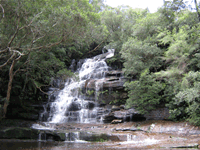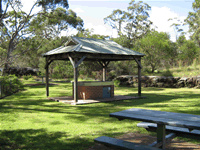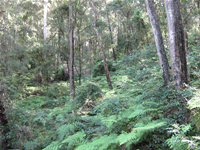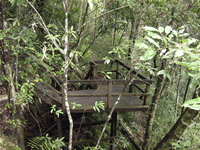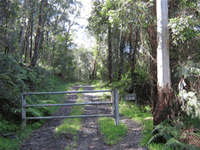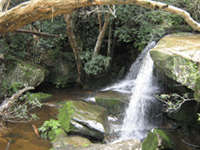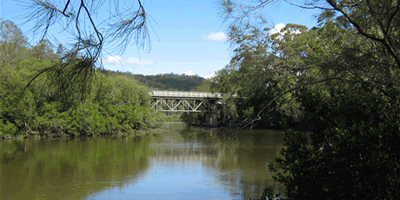
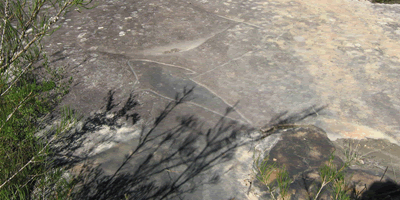
|
|
Brisbane Water National Park is located north of the Hawkesbury River approximately 60km from Sydney. With a total of 11 369 hectares it is one of the oldest national parks in New South Wales, being one of twelve areas originally reserved as a national park by the National Parks and Wildlife Act of 1967. The landscape of the park is primarily Hawkesbury Sandstone overlying Narrabeen Group sediments. The plateau has been dissected by two prominent streams that flow into broken bay, Patonga Creek and Mooney Mooney Creek, and several other smaller tributaries as well. The vegetation of the park was surveyed by the Royal Botanic Gardens and the National Herbarium identifying 15 plant communities and 657 species. The vegetation mainly consists of low open forest, low open woodland and open woodland with either a dry or moist understory. At least 10 of the recorded plant species are considered to be rare or at risk. The park is also home to 30 species of frogs, 150 species of birds, 50 species of reptile and over 25 species of mammals including The Fawn-footed Mosaic Tail Rat and the Yellow Bellied Glider. There is also reputedly a small colony of Koala's in the Pearl Beach section of the park. Two Aboriginal Tribal groups, the Dharruk and the Darkinjung occupied some areas of the park for at least 11 000 years. Throughout the park evidence of their habitation is abundant including sandstone shelters, foreshore middens, rock engravings, stone arrangements paintings and axe grinding grooves. Several hundred rock engraving sites exist within the park and their age is for the most part unknown, although some portray images of european ships thus giving a rough indicator of their age. Brisbane Water National Park offers many activities. Remote area camping is highly popular due to the length of some of the walking trails within the park. Canoeing is most definetely recommended and fishing and swimming opportunities abound within the park. Picnickers are catered for by the beautiful barbecue areas at Somersby Falls and Girrakool. Backpack camping is available for those doing the Great North Walk and throughout the park however there are no designated camping areas within Brisbane Water National Park and no fires are permitted, fuel stoves are to be used only. Places of InterestGirrakool Picnic Area was initially developed as the main facility in the park and has gas barbecues, cooking shelters, picnic tables and toilets. Located off the Pacific Highway at Somersby its close proximity to the Australian Reptile Park makes it an ideal place for a day excursion. There are a number of walking tracks at Girrakool such as the 4km Piles Creek Loop Track. Somersby Falls are located on Somersby Falls Road which joins onto Wisemans Ferry Road at Somersby. The falls themselves fall in two stages and both of these stages can be reached from a walking trail that adjoins the carpark. This track can get steep in places but the walk is well worth the effort. There are gas barbecues, cooking shelters, picnic tables and toilets. Bulgandry offers a pleasant short walk through lightly vegetated surroundings culminating in a short circular board walk around Aboriginal rock carvings. A kangaroo, a fish, a whale and other figures can be clearly seen on these large flat faced rocks.
© 2008 Centralcoast.info |
